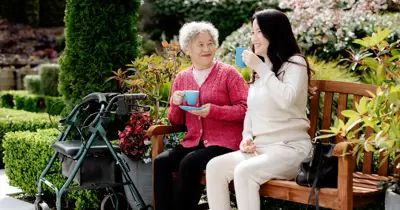Early signs it may be time to consider a care home
Difficulty managing daily tasks
One of the most common signs that moving to a care home may be necessary is increasing difficulty with everyday routines, such as preparing meals, cleaning, or keeping up with personal hygiene. You might notice a once tidy home becoming cluttered, laundry piling up, or your older family/whānau skipping meals.
These changes aren’t just about tidiness, they can signal that someone is finding it harder to manage independently.
If your relative is struggling with basic tasks, a care home may provide a safer and more long-term solution.
Missed medication or health management issues
Managing prescriptions can be complicated, especially when multiple medications are involved. Some signs that a move to care should be considered include:
- Forgetting to take medication, or accidentally taking too much
- Missing doctor’s appointments
- Difficulty following health management plans
These events can have serious health consequences and suggest that extra support would be needed. A care home environment ensures that medication and health routines are monitored, reducing the risks that come with forgetfulness or confusion.
Reduced mobility or frequent falls
Falls are one of the biggest safety concerns for older people. If your relative is finding it harder to move around the house, or if they have had one or more falls, this is something to consider seriously. Even minor falls can lead to long-term complications and loss of confidence and independence.
Increased isolation or loneliness
Emotional wellbeing is equally as important as physical health. If someone is becoming increasingly withdrawn, losing interest in hobbies, or feeling isolated, it can significantly impact their quality of life.
Many older people experience loneliness when living alone, especially after losing a partner or friends.
Comparing respite care vs a care home
Considering a care home does not mean relocation has to happen straight away. Many family/whānau explore different options first, such as respite care. Each has benefits and limitations, and the right choice depends on your older relative’s needs and circumstances.
Care home considerations
- Provides 24/7 care, support, and supervision, as well as opportunities for social connection through activities. Care homes are also built to ensure safety and minimise risks such as falls or missed medications.
- Moving away from home is an adjustment. Some people may feel uncertain about changes to their routine and environment, so it is important that they have the necessary support.
For family/whānau still exploring options, short stays can be a helpful step. A Bupa respite care or short stay service gives both family/whānau and older people the chance to trial a care home environment before making a longer-term decision.
When to consider a needs assessment in
New Zealand
The Needs Assessment and Service Coordination (NASC) service helps determine what level of care and support a person requires. Once you have spoken to your GP, they can provide you a referral for a needs assessment.
You may want to arrange a needs assessment if:
- Your relative is at risk of injury due to falls or mobility issues.
- There are ongoing concerns about missed medication or worsening health.
- Daily tasks like cooking, cleaning, or managing finances have become overwhelming.
- There’s a noticeable decline in physical or emotional wellbeing.
The NASC process involves looking at both health and lifestyle needs to recommend appropriate support. This might include in-home care services, equipment for home safety, or eligibility for rest home level care and government support.
Emotional considerations for
family/whānau and older people
The decision to consider a care home is significant. It’s natural for both older people and their family/whānau to experience mixed feelings such as guilt, fear of change, or resistance to the idea.
Open conversations matter
It can help to involve your family/whānau in discussions as much as possible, respecting their preferences and acknowledging their concerns. Listening, rather than making quick decisions, can reduce feelings of loss or lack of control. Family/whānau often find that framing the decision around safety and wellbeing, not around “giving up”, makes the transition easier to accept.
Family/whānau caregiver burnout
Many family/whānau take on the responsibility of looking after elderly parents at home while also managing jobs, children, and personal health. Over time, this can lead to caregiver burnout.
Common signs of burnout include:
- Constant tiredness or lack of energy
- Feeling overwhelmed or emotionally drained
- Irritability or loss of patience
- Difficulty sleeping
- Guilt for needing time off or help
It is important to remember that recognising burnout is not a failure. It’s an act of care for yourself and your family/whānau. Ensuring that both you and older family member are supported can sometimes mean considering rest home care or arranging a short-term respite stay. This can give family/whānau a much-needed break while ensuring older relatives remain safe and cared for.
Planning, not rushing
Recognising the early signs of care needs does not mean you have to make an immediate move. Instead, it allows you and your family/whānau to plan thoughtfully, explore options, and avoid crisis-driven decisions. Taking time to visit care homes, talking with team members, and trialling respite care can make the eventual transition smoother and less stressful for everyone involved.
Taking the next step
If you feel care home level support is needed, there are several next steps you can take:
- Speak with your GP to get a referral for your local NASC service to understand eligibility and available support. You can also find more information on services for older people here.
- Learn more about the process through our starting care page, which outlines the steps toward arranging care.
- Explore short stays at a care home.
- Visit your local care homes. Meeting the team and seeing the care home first-hand can give clarity and reassurance to help you and your family/whānau make confident decisions.

